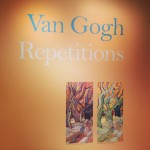Memorial Day. It’s the unofficial start of summer, a pre-solstice revelry of warm weather and outdoor fun. For many of us, myself thoroughly included, it’s a long-anticipated 3-day weekend, a barbecue bacchanalia, a day to relax and unwind.
But we all know it’s quite a bit more than that, don’t we? We find ourselves in the thirteenth year of war, and although we, Americans, often accuse ourselves and each other of forgetting or ignoring the young men and women who’ve gone to combat in our names, who are there right now, I don’t think they’re ever really far from our minds.
 Especially on Memorial Day.
Especially on Memorial Day.
Americans’ relationship with their military is complex and complicated, and all too often contemptible. We fetishize heroism to the point of absurdity—not particularly for the benefit of anyone we send to the point of the spear, but rather to salve our own guilt; either for sending them there or for not going with them. Then, not content with true, unalloyed heroism, something that occurs in abundance—we create heroic fictions designed to further a narrative or an agenda. We feign hurt and confusion when the principals don’t play along.
spear, but rather to salve our own guilt; either for sending them there or for not going with them. Then, not content with true, unalloyed heroism, something that occurs in abundance—we create heroic fictions designed to further a narrative or an agenda. We feign hurt and confusion when the principals don’t play along.
And worse, far worse. When they return they’re treated in ways that are inexcusable, that are a stain on our society. This is currently in the news, but it’s far from new.
On Memorial Day, and hopefully every day, we can and must see how wrong this is. We can and must do better. As long as we send people to war, we can and must keep our collective promises to them once we bring them home.
Memorial Day began in 1868 as Decoration Day, a day to honor 620,000 who died in the U.S. Civil War. We still observe it as day to thank and reflect upon those who suffered the ultimate sacrifice. In a larger sense we observe thanks and reflection today in honor of everyone in uniform, and everyone who has worn a uniform, knowing that it was probably just fortune or circumstance that separated them from that same sad and extreme outcome.
Not coincidentally the U.S. Civil War is also the origin of another solemn tradition, one that’s just as emblematic of non-Hollywood heroism, just as indicative of the valor of the combat soldier. The Congressional Medal of Honor is, of course, our highest military award, one given only for “uncommon” bravery. But since the first recipient—Pvt. Jacob Parrott in 1863—and until the most recent, Spc. Kyle White on May 13th of this year, the Medal of Honor has been awarded 3,488 times. A number like that suggests that bravery might not be so uncommon after all.
 On Memorial Days past here I’ve tended to tell individual stories, like those of Medal of Honor recipients Freddie Stowers and Charles J. Berry. I still believe that in individual stories a larger truth lies, and for that reason, along with respect and appreciation, I think those stories should go on being told.
On Memorial Days past here I’ve tended to tell individual stories, like those of Medal of Honor recipients Freddie Stowers and Charles J. Berry. I still believe that in individual stories a larger truth lies, and for that reason, along with respect and appreciation, I think those stories should go on being told.
But in reflecting on that fact that 3,488 Congressional Medals of Honor have been issued to date, I’ll take this Memorial Day as an opportunity to tell a more extensive tale.
The Civil War remains, by far, the conflict in which the most Medals of Honor were awarded. Nearly 44% of all the recipients earned their Medals between 1861 and 1865. The only woman thus far to earn the Medal, Dr. Mary E. Walker, won hers in 1861.
Like most instances of American combat, the Civil War was never officially declared a war, as the Constitution demands, by an act of Congress. The first declared war in which the Medal of Honor was earned was the Spanish-American War (1898). There were 110 Medals of Honor earned in that conflict.
Nearly 80% of all Medals of Honor awarded have been earned during undeclared wars. This includes all fourteen thus far earned in Iraq and Afghanistan.
It also includes conflicts you’ve likely never heard of. Did you know that the military mounted an armed expedition to Korea in 1871? There were fifteen Medals of Honor earned in the fighting there. The U.S. took part in the Samoan Civil War (1899; four Medals of Honor), the Boxer Rebellion (1899-1901; 59 Medals of Honor), and occupations of Vera Cruz (1914; 63 Medals of Honor); of Haiti (1915-1934; six Medals of Honor); and of the Dominican Republic (1916-1924; three Medals of Honor). The long, bloody subjugation of the Philippines (1899-1913), one of the most ignominious lost chapters of American history, was the occasion for 86 Medals of Honor to be awarded.
Nineteen Medal of Honor recipients have actually earned that honor twice. One president and two sons of presidents have earned the award. Fathers and sons have earned it.
Subjectively, meaning I don’t have the data or citation to prove it, I’m certain that many, many more men and women have earned the Congressional Medal of Honor, but never received it. There’s a good chance that right now, as I write this and later, as you read it, the Medal is being earned. Whether or not it’s ever received is ultimately irrelevant.
Regardless of how we feel about the conflicts that set the stage, every recipient of the Congressional Medal of Honor have earned our respect, thanks, and admiration. This is equally true of every member of the armed services who now serve, and who have ever served.
Happy Memorial Day. Thank you, Specialist White. Thank you, soldiers, sailors, marines, airmen, and veterans. This day is for you.

 You just know she made the best PB&J ever.
You just know she made the best PB&J ever. Doesn’t seem easy for the arts to do the unexpected. Or rather, artists themselves thrive on the unusual and the risky, but the arts establishment does its best to steer them, and their production, right back toward the mainstream. This can’t be healthy.
Doesn’t seem easy for the arts to do the unexpected. Or rather, artists themselves thrive on the unusual and the risky, but the arts establishment does its best to steer them, and their production, right back toward the mainstream. This can’t be healthy. Especially on Memorial Day.
Especially on Memorial Day. spear, but rather to salve our own guilt; either for sending them there or for not going with them. Then, not content with true, unalloyed heroism, something that occurs in abundance—we create
spear, but rather to salve our own guilt; either for sending them there or for not going with them. Then, not content with true, unalloyed heroism, something that occurs in abundance—we create  On
On 






 How was your day, last Friday? Was it better than WWE founder Vince McMahon’s? When McMahon woke up on May 16th, he was a billionaire. When he (presumably) drank himself to sleep that night, he wasn’t.
How was your day, last Friday? Was it better than WWE founder Vince McMahon’s? When McMahon woke up on May 16th, he was a billionaire. When he (presumably) drank himself to sleep that night, he wasn’t.

 I won’t pretend to be unbiased on this one, or even un-self-interested. I’ve been
I won’t pretend to be unbiased on this one, or even un-self-interested. I’ve been 
 impetus might have been triggered by this one (admittedly provocative) image. Beyond the accusations of sexism, though, which seemed bound up solely in how people chose to interpret that “Tech Sexy” picture, the overriding concern, in all those attacks, was that the photos and videos presented in Hot Tech Today somehow contribute to the impediments faced by women working in the tech industries, and in their struggles to be respected as equals in the workplace.
impetus might have been triggered by this one (admittedly provocative) image. Beyond the accusations of sexism, though, which seemed bound up solely in how people chose to interpret that “Tech Sexy” picture, the overriding concern, in all those attacks, was that the photos and videos presented in Hot Tech Today somehow contribute to the impediments faced by women working in the tech industries, and in their struggles to be respected as equals in the workplace. though, is the strongly held yet very wrong position put forward by some of our detractors that our magazine is somehow demeaning to women in general, and to women working in the tech industry in particular.
though, is the strongly held yet very wrong position put forward by some of our detractors that our magazine is somehow demeaning to women in general, and to women working in the tech industry in particular.
 got to know him from his brief but pivotal turn in
got to know him from his brief but pivotal turn in  And the answer came almost at once, because the digital revolution determined, definitively, that content is king. Content is our universal currency, all across the virtual landscape, and we can buy in only with content creation of our own. With very few exceptions, that’s exactly what we do.
And the answer came almost at once, because the digital revolution determined, definitively, that content is king. Content is our universal currency, all across the virtual landscape, and we can buy in only with content creation of our own. With very few exceptions, that’s exactly what we do. lose hours or worse of work, whether through your own lapses or through the randomness of electron waywardness. In my case—yes okay, it was definitely a dumbass lapse (but explainable! which I will in a moment…) —but the firstline defense for either type of volatile memory bitchslap is the same one they’ve told us since the storage was big and
lose hours or worse of work, whether through your own lapses or through the randomness of electron waywardness. In my case—yes okay, it was definitely a dumbass lapse (but explainable! which I will in a moment…) —but the firstline defense for either type of volatile memory bitchslap is the same one they’ve told us since the storage was big and  back-it-up credo: a huge chunk of external memory, in the form of this comfortingly blue-lit (it’s like it’s winking!) 3-TB external hard drive.
back-it-up credo: a huge chunk of external memory, in the form of this comfortingly blue-lit (it’s like it’s winking!) 3-TB external hard drive. memory for lots and lots of poetry doesn’t compare to the modern age’s ability to preserve everything. It’s just these occasional failures, these unexpected and unrecoverable losses of data that against all odds, didn’t get saved…that sting. Losing that chapter stung. It stings sharpest of all to know that wet memory being what it is, I’ll never recreate precisely what I wrote that night.
memory for lots and lots of poetry doesn’t compare to the modern age’s ability to preserve everything. It’s just these occasional failures, these unexpected and unrecoverable losses of data that against all odds, didn’t get saved…that sting. Losing that chapter stung. It stings sharpest of all to know that wet memory being what it is, I’ll never recreate precisely what I wrote that night.
 This is the second time
This is the second time  might say that the work was completed in 1896, when the artist lowered his brush. A twenty-first century add-on isn’t welcome and doesn’t belong.
might say that the work was completed in 1896, when the artist lowered his brush. A twenty-first century add-on isn’t welcome and doesn’t belong.
 So I give to you the
So I give to you the 

 distorted perspectives of his later work, particularly those created in his last, frenetic year of 1890, seem to confirm a viewpoint and perspective of an artist who was not seeing the world as most of us see it. It made him, perhaps, a better artist, or at least a more driven one. There was a 70-day period in that last year where he completed 70 paintings. But it also made him a wretch of a man, scarcely able to care for himself, and probably doomed to pass, as he did, far too young, at the age of 37.
distorted perspectives of his later work, particularly those created in his last, frenetic year of 1890, seem to confirm a viewpoint and perspective of an artist who was not seeing the world as most of us see it. It made him, perhaps, a better artist, or at least a more driven one. There was a 70-day period in that last year where he completed 70 paintings. But it also made him a wretch of a man, scarcely able to care for himself, and probably doomed to pass, as he did, far too young, at the age of 37. chest. When asked if he’d done the deed, he said that he “must have.” No gun was ever found, though. And a rich merchant’s son, who lived nearby and who was well known as a vicious tormentor of the pitiful artist, was hustled out of town the very next day.
chest. When asked if he’d done the deed, he said that he “must have.” No gun was ever found, though. And a rich merchant’s son, who lived nearby and who was well known as a vicious tormentor of the pitiful artist, was hustled out of town the very next day. like this.”
like this.”